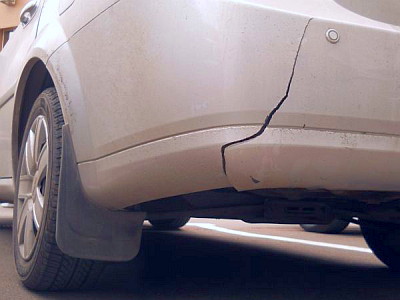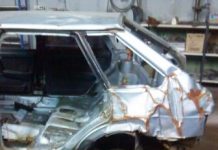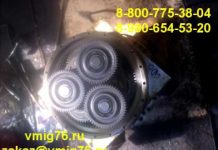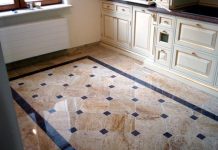In detail: do-it-yourself repair of a hole in the bumper from a real master for the site my.housecope.com.
Having broken a plastic bumper on a VAZ car, the owner can relatively inexpensively purchase and install a new one, painted in a suitable color. Owners of foreign cars are not so lucky, plastic body kits for their cars are much more expensive. The way out is to repair the damaged part by repairing the crack with your own hands in order to save money. It is useful to know about the methods of restoring broken plastic to the owners of Russian cars, not to buy a new element because of small cracks.
Depending on the amount of damage and the type of plastic, the following methods of cracked bumpers are practiced:
- cosmetic bonding with acetone and donor plastic;
- gluing with modern chemical compounds;
- mount on epoxy resin using fiberglass reinforcing mesh;
- sealing the crack with a soldering iron reinforced with a metal mesh;
- welding with a hot air gun and a plastic rod.
Reference. There is one simple method used by car enthusiasts who are not overly concerned about the look of the car. This is the connection of the edges of the crack with wire or staples from a stapler. This is a simple matter, which means that there is no point in considering this technology, everything is clear.
The use of acetone for bonding, which can dissolve many types of plastics, is a temporary measure used for small cracks that have appeared in the middle of the body kit. Its essence is as follows:
- Pieces of plastic, similar in composition to the bumper material, are selected and dissolved in acetone to a thick consistency.
- On the back of the bumper, the crack is degreased and also treated with acetone in order to soften the surface.
- Liquefied plastic is applied to the damage from the reverse side, after which it hardens for several hours. Outside, the defect can be tinted with a corrector tube.
| Video (click to play). |
Any single cracks in most plastics can be sealed using thick two-component compounds sold in two tubes. The exception is fiberglass body kits, they are glued together with epoxy resin, and in case of serious damage, reinforcement with fiberglass mesh is used.
With numerous large cracks, breaks and holes in the bumper, bonding methods become ineffective. In such cases, soldering or welding with a hot air gun using a donor polymer material is practiced. After such repairs, the place of the defect is thoroughly cleaned and painted in the color of the car. Finally, a full bumper polish should be done so that the painted area does not stand out against the background of the old coating.
Advice. If you got into an accident or collided with a fixed obstacle and broke the body kit, try to collect all but the smallest pieces that have flown off. This will allow you to use "native" plastic for repairs and not look for something similar.
The preparatory process differs little for various methods of gluing and welding polymer parts, so it should be considered separately. The first question is whether it is really necessary to remove the bumper in order to make repairs. In most cases, dismantling is indispensable, since the plastic must be sealed on both sides. The exception is broken body kits, cracked in many places. They must first be stitched together and then removed. Otherwise, after repair, the part may lose its shape, which is why the attachment points will not converge, and the gaps with adjacent elements will increase.
Reference. Often, the body of the bumper comes off at the attachment points and small pieces of plastic remain on the screws.Before dismantling, such a part is securely welded to the torn mount and only then removed.
To prepare a damaged body kit for repair, you need the following tools and materials:
- a set of keys and screwdrivers for removing the element;
- electric grinder;
- sandpaper of various grain sizes - from P180 to P320;
- degreasing liquid - organic solvent or white spirit;
- rags.
Note. With the help of a grinding machine, you can perform cleaning better and much faster than by hand. This and other power tools that are needed for painting and polishing can be rented for 2-3 days.
Regardless of whether work is being carried out directly on the car or with the bumper removed, it must be thoroughly washed and dried. Then, with a coarse sandpaper, you need to peel off the paint with an indent of 3-5 cm from the crack in each direction and sand the area with fine sandpaper. Whichever method of repair you choose, the paint must be removed to the base, otherwise it will interfere with the adhesion of the adhesive or the fusion of polymers during welding. At the end, the area should be degreased.
Advice. The quality of the body kit repair depends on the conditions in which it is made. It is more convenient to repair damage in a garage equipped with a viewing ditch for easy removal of a part and soldering of loose fasteners in place.
To implement this method, you need to purchase the following bumper repair kit from the 3M brand:
- 2 FPRM components for the preparation of liquid polymer in tubes of 150 ml (price - about 2500 rubles);
- special hard tape;
- self-adhesive reinforcing mesh made of fiberglass (otherwise - glass canvas) 48 mm wide;
- an adhesion initiator in an aerosol can;
- 2 spatulas - wide and narrow;
- stationery knife;
- gloves, goggles.
Reference. Similar kits are offered by other manufacturers, but the 3M brand is the most famous and proven in practice.
Liquid resin bonding is suitable for most plastics and can be done either with the body kit removed or on the vehicle. True, the second option is rather inconvenient, plus you will need good lighting in the inspection pit. To cut the crack, you will need an electric drill (not a grinder!) With a mandrel for abrasive wheels. The repair consists of the following technological operations:
-
Using a low speed drill and an abrasive wheel, chamfer approximately 30 ° around the edges of the crack on both sides. In cross-section, it looks something like this: ">
Important! After mixing the components, the composition must be used within 6 minutes, which is quite enough for applying to the damage on one side. A curing time of 30 minutes is correct for a room temperature of 21-23 ° C, therefore, when working in a cold room, it is imperative to arrange local heating of the bumper (for example, with an infrared heater).
If irregularities are noticeable on the front side of the element, then before painting, apply a little putty intended for plastic on the drops. After drying, clean it with P1500 sandpaper, degrease and paint with a spray gun, after applying a layer of primer. After 1 day, polish the surface of the body kit.
The technology is used to repair damage to body kits made of fiberglass, since the previous method will not work in this case. What is required for work:
- fiberglass for bumper repair;
- polyester (epoxy) resin complete with hardener;
- soft brush;
- utility knife or scissors;
- latex gloves.
Advice. If a bulge or a depression has formed at the place of impact, then immediately after stripping, level it using a construction hair dryer to heat it.
Since fiberglass patches will have to be applied on both sides of the damaged area, it is better to dismantle the bumper from the car.After completing all the preparatory work, including stripping paint and degreasing, proceed in the following sequence:
- Using a sander with coarse sandpaper (P80-P120), make a depression in the bumper body from the front side, covering a radius of 3-5 cm from the crack. This is necessary so that the fiberglass overlay does not ultimately protrude beyond the plane of the part.
- On the back, sand it with a coarse sandpaper, but without a depression. Degrease the area and let dry.
- Cut out the fiberglass patches. On the front part, you need to make a neat patch, repeating the shape of the recess, and from the rear you can glue a rectangular overlay.
- Mix resin and hardener in the proportions indicated on the package. Apply the composition with a brush to the surface, apply a patch (you can in several layers) and saturate it with resin.
- Accurately observe the time specified for the curing of the epoxy compound (written on the container with the resin), then carefully clean the repair area with a fine sandpaper. The task is to level the surface by removing the protrusions.
Note. Initially, coarse sandpaper is used in order to create a roughness on the surface of the plastic, which contributes to better adhesion of the polyester adhesive.
This completes the work on the repair of the plastic itself, then cleaning, priming and painting are performed using standard technology. The last operation is bumper polishing, it is necessary to give the element a uniform shine.










